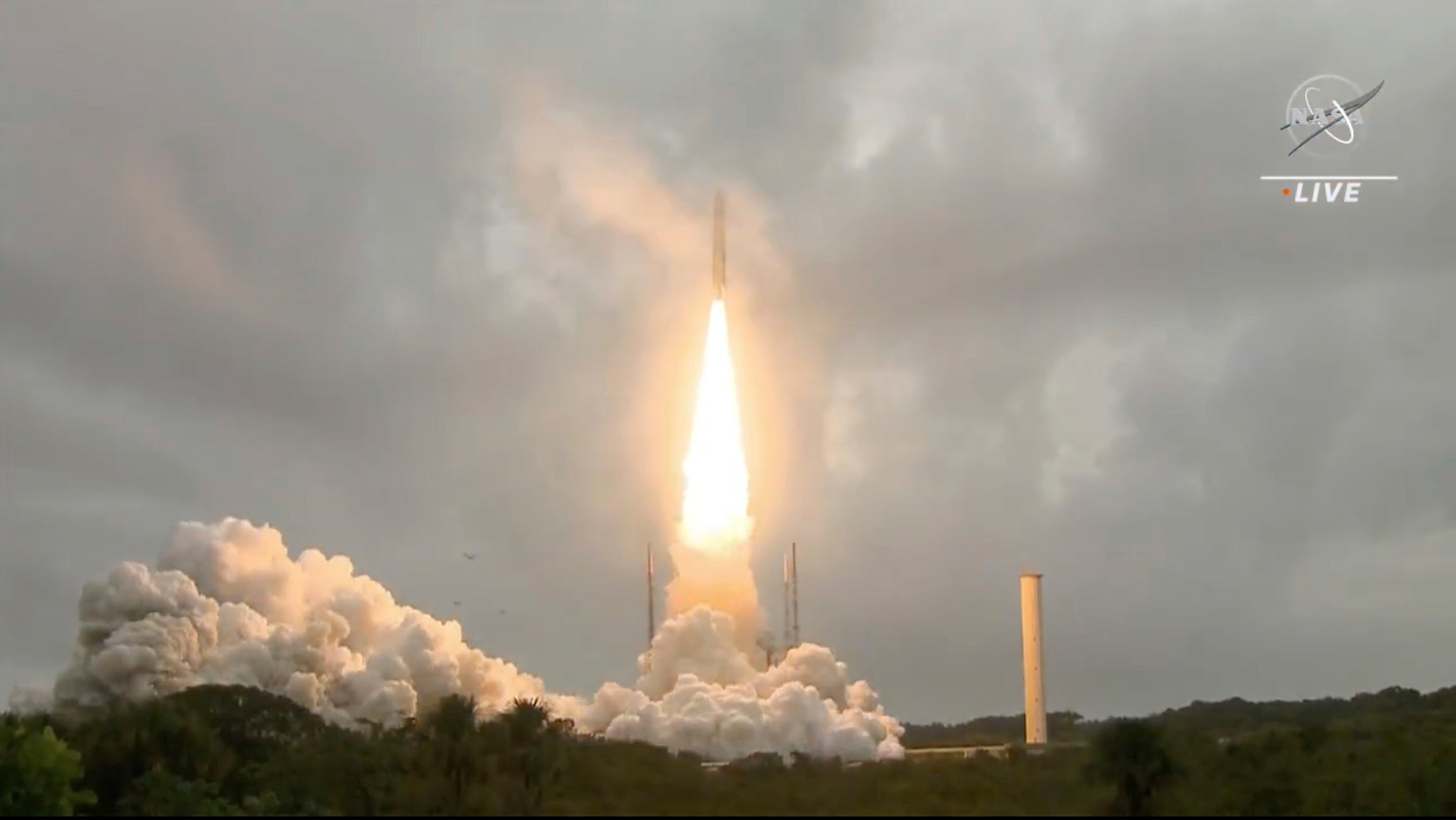World’s most powerful telescope launched into space
The James Webb Space Telescope blasted off from Kourou spaceport in French Guiana.

The world’s most powerful telescope has been launched into space on Christmas Day.
The James Webb Space Telescope (JWST) took off from Kourou spaceport in French Guiana at 12.20pm on an Ariane 5 rocket.
Designed to answer unsolved questions about the universe, it will look further back in time than ever before, to 400 million years after the Big Bang, the UK Space Agency says.
It was originally meant to leave on Christmas Eve, but a forecast of high-level winds at the spaceport forced it to be postponed.
Controllers were given a 30-minute window to launch the rocket beginning at 12.20pm, and successfully hit the beginning of the time slot.
As the rocket launched, Nasa spokesman Rob Navias said: “Lift-off, from a tropical rainforest to the edge of time itself, James Webb begins a voyage back to the birth of the universe.”
The launch was streamed live by Nasa, with commentary in various languages.
Boris Johnson commended the launch, calling it a “great leap forward for space discovery” and a “testament to the immense skill and ingenuity of the UK’s world-leading scientists and engineers”.
The Prime Minister said: “Today’s launch also shows the enormous value of investing in our science and research base and cementing the UK’s position as a global science superpower – not only to give us a glimpse of galaxies beyond our own but also to support skilled jobs and boost investment here at home.”
Preparation for the project began in 1996, and construction was completed in 2016.
The launch was initially planned for earlier this month, but several setbacks including a communications issue and an incident requiring an extra round of checks on the telescope pushed the date back.
The JWST’s partners are the European Space Agency (ESA), Nasa and the Canadian Space Agency.
The telescope follows the Hubble Space Telescope as the next great space science observatory, designed to answer questions about the universe and to make breakthrough discoveries in all fields of astronomy.
Cosmologists, including those in the UK, will use the telescope to map dark matter around galaxies, with the aim of unlocking the secrets of the mysterious substance that makes up the vast majority of matter in the universe.
It will be used to help determine how the first galaxies formed, according to the Science and Technology Facilities Council (STFC), which said scientists in the UK were central to the development and launch of a key piece of scientific gear – the Mid-Infrared Instrument (MIRI).
MIRI, funded by the STFC, the UK Space Agency and the ESA will be able to see the faint light from the most distant stars and look through dust and gas to spot stars being born, the council said.
Caroline Harper, head of space science at the UK Space Agency, said: “Webb is set to rewrite the text books on astronomy, showing us things about the universe we have never been able to see before.”
Once in space, the giant mirror for the telescope has to be unfolded and all the segments perfectly aligned, the council said.
A huge sunshield the size of a tennis court is needed to keep the instruments cold enough to work and this must also be unfurled in space.
The telescope will then undergo a month-long journey, and first results should be expected next summer 2022.
The project involved many people over 25 years, including scientists at the University of Leicester.
Piyal Samara-Ratna, part of the Leicester team that contributed to the design, build and test of MIRI, said: “The launch of the James Webb Space Telescope is a truly momentous occasion and marks the successful completion of the collaborative design, planning and execution of thousands of experts across the world.”
Scientists from Durham University are among a team of 50 researchers from around the world taking part in the Cosmos-Webb programme, which will use JWST to survey a patch of sky near the constellation Sextans.